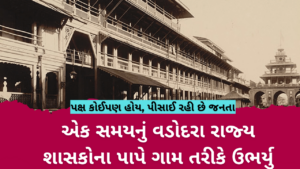It’s a long cherished dream, a vision of building our own. Were we desperate to fulfill this dream of ours or it could have been avoided? Will we be entering the fresh era or is it a mere shift of the seat of power? For many it is a statement of freedom from colonial legacy while for many it’s an accomplishment of an ordinary ego trip to prove the ‘atmanirbharta’. Amidst the heap of speculations, the new parliament house is trending not just in India, but also abroad. This project comes under the Central Vista Redevelopment Scheme which is going to revamp the Central Vista, India’s central administrative area located near Raisina Hill, New Delhi. It was originally designed by Sir Edwin Lutyens and Sir Herbert Baker during colonial rule.
The Central Vista Redevelopment Scheme
The grand redevelopment scheme which is estimated at over Rupees 13,000 Crore was launched in 2019. It includes converting the North and South Blocks into public museums, new secretariat buildings, Vice- President and Prime Minister’s offices and residences; revamping the entire 3 km stretch of Rajpath between Rashtrapati Bhavan and India Gate.
None of the listed heritage buildings will be demolished. The architectural majesty of these structures will be retained. The redevelopment project will be appropriately retrofitted as per the heritage standards and refurbished for their future use. Here is the list of structures:
- New Structures: New Parliament House, Kartavya Path (Rajpath), Common Central Secretariat, Common Conference Centre, New Vanijya Bhawan, New Residence and Office of Vice President and Prime Minister, New facilities for IGNCA.
- Proposed Structures: Old Parliament House, North and South Block, Presidential Gardens
- Retained Structures: Rashtrapati Bhawan, India Gate, National War Memorial, Rail Bhawan, Vayu Bhawan
- Structures to be Demolished: Annexe building of National Archives, Indira Gandhi National Centre for the Arts, Vice President’s House, National Museum, Shastri Bhawan, Vigyan Bhawan, Krishi Bhawan, Nirman Bhawan, Udyog Bhawan, Vanijya Bhawan, Raksha Bhawan, Nehru Bhawan, Transport Bhawan, Shram Shakti Bhawan
The New Parliament House
Early in the 2010s, ideas for a new parliament building to replace the current complex surfaced due to concerns about its stability. Speaker Meira Kumar, who was in office at the time, had formed a committee to develop a number of alternatives to the current structure. The current structure, which is 93 years old, is thought to have structural problems as well as not having enough space to house members and their employees. There was space crunch in the historically significant old parliament building, particularly during joint sessions. Even though there are 793 members of parliament in total, the central hall where the joint sessions were held could only hold 436 people. The Lok Sabha will also accommodate more people in the new parliament, which will lack a central hall. India aims to expand its Parliamentary membership in 2026, hence this decision. Despite this, preparations are in place to safeguard the building because it is thought to be a significant part of India’s national history.
As Prime Minister Narendra Modi is all set to inaugurate the new parliament building today, all eyes are on Delhi. Let’s examine the funds used for its development, the area, and other elements since the more than 90-year-old old parliament house is about to be replaced by a bigger and newer one. The New Parliament Building stretches in 64,500 sq. mt. area with rupees 862 crore as the cost of construction. Lok Sabha will now be able to host 888- 1272 members while Rajya Sabha has seating capacity of 384 members. Over 26,045 metric tonnes of steel is used along with 63,807 tonnes of cement. 23,04,095 days employment was granted to the labourers.
The new complex is shaped like a hexagon, as per Bimal Patel, the architect in charge of the redevelopment of Central Vista. It is next to the current complex. The structure is intended to last for more than 150 years. It has architectural designs from many regions of India and is built to withstand earthquakes.
A “Sengol” will also be housed in the new structure. It is a historical sceptre made in Tamil Nadu that was modelled after the “Sengol” used during the Chola Kingdom era to transfer power from one ruler to another. The British gave it to the first Prime Minister Jawaharlal Nehru to symbolise the transfer of power, and it will be erected in the new Parliament building.
Disputes and Controversies
In December 2020, as the nation was still suffering from the Covid-19 pandemic, the cornerstone of the new Parliament building was laid. The project has faced numerous controversies since then.

There is controversy around Prime Minister Narendra Modi’s opening of the new Parliament building. Amit Malviya, the head of the BJP’s IT unit, announced the date of the inauguration and noted that it was also the birth anniversary of Rashtriya Swayamsevak Sangh (RSS) idealist VD Savarkar. Since then, 21 opposition parties have declared their intention to abstain from the ceremony, claiming that the Prime Minister’s decision to inaugurate the Parliament without President Droupadi Murmu amounts to a serious insult and an outright attack on Indian democracy.
But other controversies around the new Parliament building began much earlier. For lovers of the ‘Lutyens Delhi charm’, the announcement of the Central Vista Redevelopment Project in 2019 caused great disappointment and raised a lot of questions. When the Sarnath lions, also known as the Lion Capital of Ashoka, were presented atop the new Parliament building in July 2022, it drew harsh criticism from politicians, historians, and artists. For the new Parliament building, the violent, teeth-baring lions that were the state emblem’s original counterpart were used in favour of the peaceful, benign, and dignified lions.
The Union government informed Lok Sabha that 2,466 trees were cut down for Central Vista in July 2022. All trees were intended for transplantation, and the government also said that it would guarantee the planting of 10 more trees as a kind of restitution for each tree that was moved. Only 30% of the more than 400 transplanted trees had survived as of August 2022. This is in spite of environmentalists’ warnings that the concept was flawed from the start because entire ecosystems cannot be moved.







